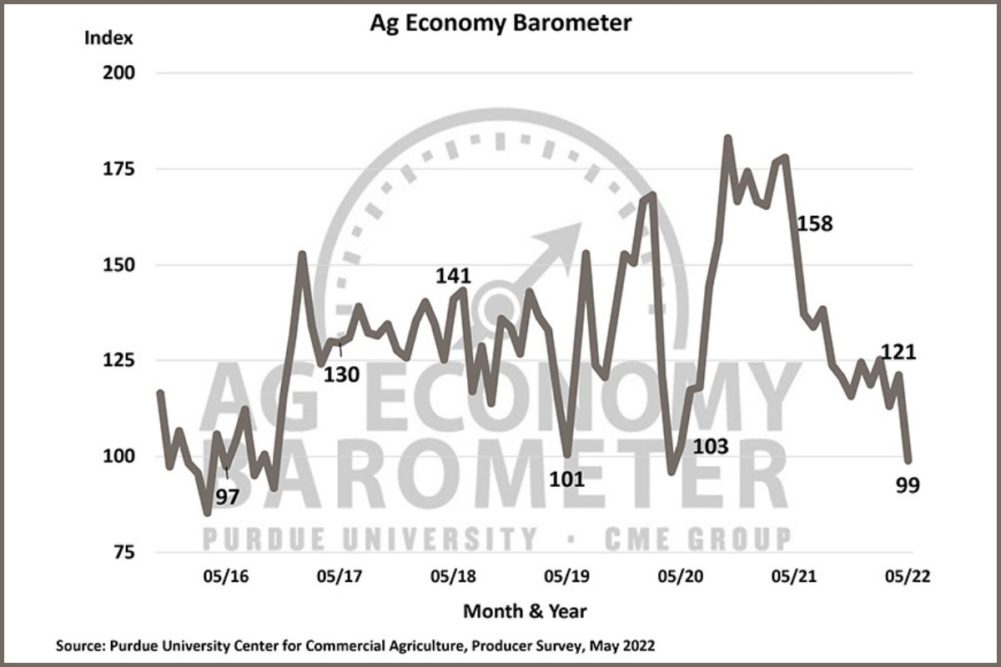WEST LAFAYETTE, INDIANA, US —Despite high commodity prices, US agricultural producers are concerned about the high cost of inputs and where prices might be headed, causing farmer sentiment to plummet in May.
The Purdue University/CME Group Ag Economy Barometer dropped to its lowest level since April 2020, down 22 points in May to a reading of 99. Perceptions of current condition as well as future expectations weakened in the month.
The Ag Economy Barometer is calculated each month from 400 US agricultural producers’ responses to a telephone survey. This month’s survey was conducted between May 16-20.
“Despite strong commodity prices, this month’s weakness in producers’ sentiment appears to be driven by the rapid rise in production costs and uncertainty about where input prices are headed,” said James Mintert, the barometer’s principal investigator and director of Purdue University’s Center for Commercial Agriculture. “That combination is leaving producers very concerned about their farms’ financial performance.”
The Farm Financial Performance Index declined 14 points to a reading of 81 in May. The percentage of producers who expect their farm’s financial performance to worsen in 2022 compared to last year rose from 29% in April to 38% in May. Over the course of the last 13 months, the Farm Financial Performance Index has fallen 41% below its life of survey high of 138 set in April 2021.
In the May survey, only 13% of respondents said this is a good time to make large investments in their operation, while 78% said they viewed it as a bad time to invest in things like machinery and buildings.
Higher input costs remain a top concern for producers with 44% of those surveyed choosing it as the biggest concern facing their farming operation in the coming year. Additionally, 57% of producers said they expect a 30% or more rise in prices paid for farm inputs in 2022 compared to prices paid last year. The May survey also asked producers about their expectations for input costs in 2023 compared to 2022 with nearly 39% of producers indicating they expect an additional cost increase of 10% or more in the coming year.
In response to a Biden administration policy proposal for a $10/acre wheat/double-crop soybean crop insurance subsidy, this month’s survey asked respondents if the subsidy would encourage them to plant more wheat in fall 2022 than would otherwise be the case. Among producers who have employed a wheat/double-crop soybean rotation in the past, just over one in five (22%) said it would encourage them to plant more wheat. Among producers who have not followed a wheat/double-crop soybean rotation in the past, just 1 out of 10 producers said the insurance subsidy would encourage them to plant more wheat this fall.






